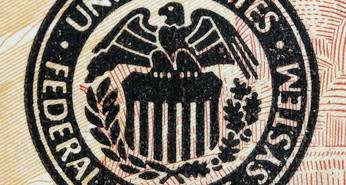Recently central banks have come under a significant amount of pressure. Massive systemic failures like the global financial crisis and Eurozone debt troubles have created calls for an overhaul of the centralized system. Technology, in the form of cryptocurrencies, has sought to decentralize control, effectively creating an existential crisis amongst central banks. Further claims of corruption and incompetence from the decentralization lobby has the public beginning to question the merits of centralized banking. As a result, central banks are under more pressure than ever before to justify how they are living up to their mandate.
The largest central bank in the word, the US Federal reserve, has a colorful and checkered history. A quick perusal of its history shows that the current US Fed Reserve is actually the fourth in US history. From 1781 to 1783, there was the Bank of North America. After this came the Bank of the United States, from 1791 until 1811. The third was creatively titled the Second Bank of the United States, and ran from 1816 until 1836. The current Federal Reserve has been in place since 1913’s Federal Reserve Act, giving it the responsibility to control monetary policy in the United States. The act defines the three primary objectives for monetary policy; maximizing employment, stabilizing prices and moderating long-term interest rates.
As with most central banks, the US Fed reserve has control over monetary policy without oversight, allowing it to create monetary policy independent of political pressure. This is designed to protect the public, since a department that works under the instruction of the government would be required to follow the government’s instructions, rather than the needs of the public. So, in a sense, the central bank itself is decentralization from the power of the government.
However, what the decentralization movement is actually looking to achieve is to remove the centralization of any responsibility and give it back to the public. Since the Fed’s board of governors are appointed by the president, it leaves itself open to corruption claims.
For the general public, the drive towards decentralization is more muted. For them it is the perception of the effectiveness of the central bank and belief in its independence that determines whether there will be significant public will towards moving away from centralization. To their credit the decentralization movement has already set in motion rising doubt in both these aspects.
For this sort of thing, there is ample ammunition. Joe Public just needs to look around and ask if his interests are being met by the actions of the Fed. The questions then come thick and fast. Does the Fed exacerbate booms or busts? Have the gains made in the share market really created better paying jobs and a healthy economy? As long as these questions linger, the finger will be pointed at those whose hand is on the trigger.
And because of the GFC, the optics aren’t good. During the GFC, the Fed bailed out banks and manufacturers to stabilize the world economy. Using taxpayer’s money. The perception that they were asleep at the wheel and then used taxpayer dollars to bail out unethical “one percenters” is not something that the public will easily ignore. Quantitative easing brought the solace of cheap money and low interest rates, buoying the economy. But quantitative easing is not a long term solution and any sense of tension will create unease towards the Fed reserve.
The war has moved into the public arena through the media, allowing the decentralization movement to set the tempo. It will be interesting to see whether this pressure will sway the public and create a reform from the current hegemony.
